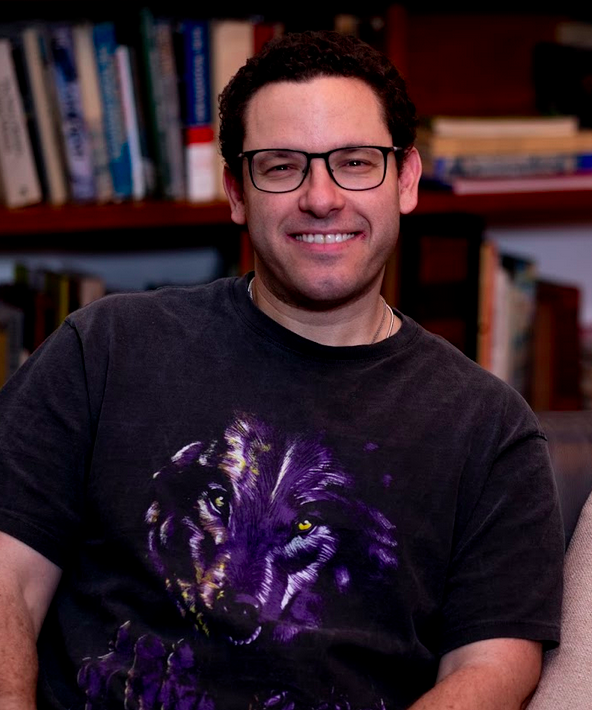In this update, you’ll discover the power of trading volatile stocks. I’ll also share some insight into exponential growth. Together, volatile stocks and exponential growth are what made me rich.
First…
Table of Contents
Shelter-In-Place Update

2025 Millionaire Media, LLCI’m still in California, just chillin’ … and working. A lot of people are bored. That’s CRAZY. The market is going insane. There are so many plays every day. Now’s the perfect time to study. You have a great opportunity to witness volatile stocks in action.
If people studied more and were better prepared they’d see that. So right now I have two big goals while I shelter in place…
First, I’m trying to trade these plays. Like I said, there are so many plays it’s hard to keep up. Which is why it’s important you don’t feel bad if you miss any one play. Or even several plays.
Every day brings more opportunities to learn…
And that brings me to my second goal. I’m trying to get people to actually study. Which is why I put together my no-cost “Volatility Survival Guide.”
I urge you — if you’ve been thinking about trading stocks — to get your no-cost pass now.
What’s Inside the “Volatility Survival Guide?”
Four episodes focused on how to trade volatile stocks. Plus, you’ll discover why NOW is one of the greatest times in stock market history. Even if you’re not ready to start trading, today is a perfect day to learn…
- In episode #1 I explain why volatile stocks are key to my success.
- In episode #2 you’ll discover three things that make stock prices go up or down … even when the economy is crazy.
- Episode #3 is an over-the-shoulder look as I break down trades in real-time — what I picked and why. (This alone is worth several hundred dollars, but I’m giving it to you for free in the “Volatility Survival Guide.”)
- Finally, in episode #4 you’ll meet my friend Tim Bohen, who tells you about the power of StocksToTrade.
So many students ask if StocksToTrade is worth it. Now you can see for yourself. In episode #4 Tim Bohen shows you how to scan for the most volatile stocks and weed out those that don’t matter.
This is your chance to see StocksToTrade in action with the platform’s lead trainer, Tim Bohen.
Get Free Access to the “Volatility Survival Guide” Here
Plus, as a thank you and so you can start paper trading right away…
Get a Special Deal on StocksToTrade Here
All I can do is create as much solid content as possible. It’s up to you to study. I made this guide free so people would have an idea of how many plays there are and what tools to use.
Study up and prepare!
Now, let’s get to volatile stocks and trading questions from students…
How I Got Rich Trading Volatile Stocks*
Are you ready? Here’s the secret…
Volatile Stock Trading Tip #1: Small Gains Add Up
One trade at a time.
Most of my trades are small gains. My average profit is $1,754.* But you gotta remember I’ve been doing this for 20 years. In my early years, I traded much bigger position sizes. These days most of my gains are smaller.
Another thing people want to know is how I find volatile stocks before they spike. I don’t care about them before they spike. The whole key is waiting for them and recognizing which spikes have legs.
Remember, my goal on most trades is to make 10%–30%. If a position is going against me, I follow rule #1 and cut losses quickly.
(*Please note: my results are not typical. I’ve spent years developing exceptional trading skills and knowledge. Always remember trading is risky. Never risk more than you can afford.)
More Breaking News
- United Airlines Stock Faces a New Challenge
- Metsera Inc. Booms: A Surge in Stock Value?
- HIVE Stock Soars: Too Late to Buy?
Volatile Stock Trading Tip #2: Clean Charts Are Better Than Choppy Charts
I prefer clean charts even though they’re not quite as volatile. So I’m not trading any stock randomly spiking. If it’s too choppy, I tend to stay away. Volatile … yes. Random stocks … no.
Look for big percent gainers with volume and a news catalyst.
Volatile Stock Trading Tip #3: Focus on Clear Patterns
Sometimes I take trades where I only make one to two cents a share. People ask, “Why do you care about making a penny or two on a stock? Isn’t that scalping?”
For me, if it’s a pattern I know well, a stock I know well, and it’s a lower-risk setup, I don’t mind taking small profits. Keep in mind, I’m NOT saying scalp some random big company.
So focus on a clear pattern even if it’s not gonna add up to huge money. See the trading lesson of the week below for more about how I got rich trading volatile stocks…
Trading Questions from Students
“Is the adaptation of your OTC first green day pattern — selling into the close — a new pattern? Or is it just a conservative adaptation?”
No, it’s not a new pattern. It’s a conservative mutation on the first green day. This is important — because I’ve seen and traded the same patterns for 20 years now…
It’s the same exact setup. What’s the setup? A big percent gain, with volume, with a news catalyst leading to an OTC first green day.
Recently it’s been better to buy around 2:30 or 3 p.m. Eastern and sell any time between 3:30 or 4 p.m. Eastern.
In the past, I’ve held this setup overnight. Recently you don’t have to hold — it’s an intraday pattern. I know some people prefer overnight. Maybe it’s because they’re under the PDT rule. My answer to that is … who cares what you prefer?
Do whatever works best for your strategy. Volatile stocks made me rich, but I’ve adapted over the years.* It’s not an exact science.
One more thing…
Just because there’s a first green day adaptation working right now does NOT mean I always sell into the close.
For example, I held a first green day play — Kronos Advanced Technologies Inc. (OTCPK: KNOS) — over the weekend. It finished strong on April 17, and it’s a former runner. So I took a small dollar position size. I wanted a press release and a gap up or morning spike to sell into. I didn’t get it. So I sold for a $140 profit — basically a scratch.
Next question…
“In a recent watchlist, you mentioned too many plays to track in an organized manner. Some traders use 20 screens and track a bunch of stocks. Are penny stocks too volatile to track that way?”
In a perfect world, you could probably have two or three screens. But 20 screens … or even seven screens … that’s overkill.
Maybe if you have a big account and you’re taking 14 longs and seven shorts as a hedge…
… but for penny stock trading you should have one or two plays at any time. Focus on only the best plays.
What are the best plays? Volatile stocks. That’s key. I say it over and over again … start with the biggest percent gainers. Every. Single. Day. It’s really as simple as that.
(Notice I didn’t say trading volatile stocks is easy … it’s not. Even if it was easy, my lawyer wouldn’t let me say so. But it’s not. And my lawyer is NOT attempting to suck the life out of me. Honestly, I’m grateful for my lawyers.)
Back to all those extra screens…
The extra screens just allow you to watch more charts, more often. More potential setups. But it doesn’t mean you should be trading more. They’re helpful for spotting more…
But remember, volatile stocks can move fast. That’s the beauty and the obstacle. You can’t watch and trade a bunch of volatile stocks all at once. Focus on only the best setups.
Let’s finish up with the…
Trading Lesson of the Week
With volatile stocks, you have to be willing to take small gains. Small gains really do add up. This is how you can grow your small account. I didn’t get rich starting with a big account. Not ONE of my top students got rich starting with a big account.*
[*Note that these results aren’t typical. My students and I put in the time and dedication and have exceptional skills and knowledge. Most traders lose money. Always remember trading is risky … never risk more than you can afford.]
But remember this…
Because a lot of people are almost getting it … They’re saying, “OK, small gains add up.” I’m thinking very small… maybe $50 or $100 at a time. But that’s gonna take a while, right?
So here’s the key: How you make the $30, $50, or $70 matters. Because later — to achieve exponential growth — you’ll have to scale up.
So when you take those small gains, are you doing it on volatile stocks where you have a small position size?
Let’s look at an example…
Volatile Stocks and the Science of Exponential Growth
Let’s say you make $100 profit on a 1,000-share position. Later you can take the same exact trade but with a bigger position size.
Let’s say you take 10,000 shares — then you’d make $1,000 on the same trade. Or 100,000 shares, you’d make $10,000…
The key is … it’s very important you’re trading volatile stocks. Then it’s a matter of working on the process and learning the rules.
If you’re serious about gaining freedom through trading, watch the 11-minute video below. It’s one of the most important lessons I’ve ever shared. Watch it twice. Take notes.
Exponential Growth Curve: The True Story Behind Stock Spikes
Now that you’ve watched the video, be sure to get access to the “Volatility Survival Guide.”
Why My Strategies Don’t Work for High-Priced Stocks
So some people get the idea of small gains, but they try to apply it to big companies. “Take small gains … OK … I’ll just trade Amazon and take a small gain.”
NO.
With small gains on volatile stocks, you use the same process and increase position size. So you need to trade low-priced volatile stocks. That’s the key. If you make $100 profit on a $1 stock, you can size up later. If you make $100 on a $1,000 stock … sorry, you can’t even buy another share.
Millionaire Mentor Market Wrap
Do you get how important it is to trade volatile stocks? If you want exponential growth … and you want to do it in a reasonable amount of time … then focus on volatile stocks.
What’s the catch?
You need a mentor. Like I said before, this is simple but not easy. There’s a lot to learn — especially at first.
You have to learn the patterns, the rules, and how to manage risk. You have to learn how to find only the best volatile stocks and best patterns. You have to know the difference between choppy price action and clean price action.
All that takes time, and you have to study. My goal is to be the mentor to you that I never had. I want to help you cut the learning curve into manageable chunks.
If you’re ready to take me up … apply for my Trading Challenge today.
What do you think of volatile stocks? Comment below, I love to hear from all my readers!













Leave a reply